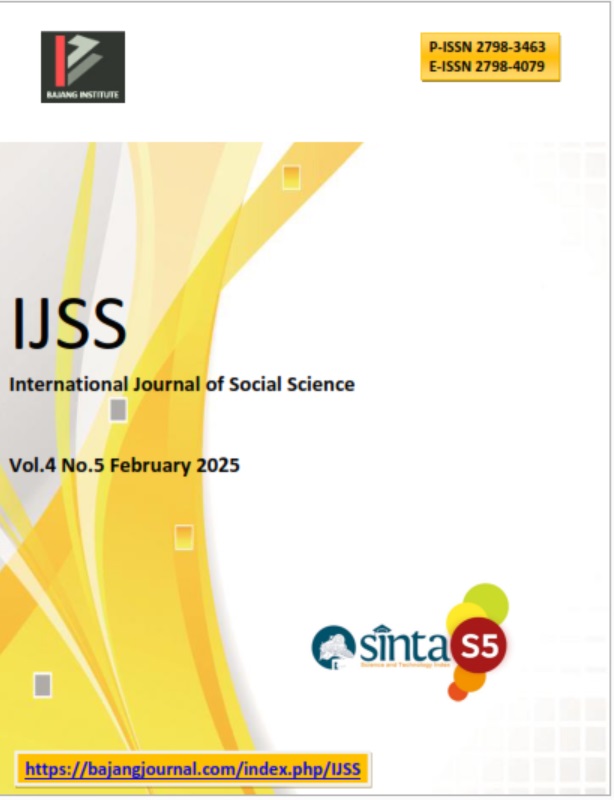THE TRANSFORMATION OF TORAJA ORNAMENT’S MEANING ON DHARMAWANGSA SQUARE TATOR CAFÉ APPLYING HERMENEUTIC THEORY
DOI:
https://doi.org/10.53625/ijss.v4i5.9836Keywords:
Transforming, Meanings, Toraja Ornament, Aesthetic ElementsAbstract
This research aims to analyze the transformation of the meaning of Toraja ornament, particularly, Pa’ Barre Allo motive, using Jakarta Dharmawangsa Tator café Square as the primary data. This study employs Hermeneutics theory by Paul Ricoeur stating that it explains about the rules of the interpretation of texts, signs, and symbols. Moreover, this research discusses about how the traditional Toraja ornament is applied in modern commercial space. Toraja ornament, having sacred meaning traditionally, shifts its meaning as it is implemented in café interior elements of the public spaces. It means that the ornament does not only function as aesthetic elements, but it also has great values, representing the sensibility of Toraja culture on commercial interior design. Furthermore, this study reveals about the application of Pa’ Barre Allo motive on café Tator transforming its sacred meaning to aesthetic elements in order to strengthen the attraction and brand identity of the space of the café. The results of this research are expected to enhance the comprehension of the transformation of the cultural values in commercial interior design. Finally, they can contribute to the preservation of Indonesian history and culture
References
Appadurai, Arjun. 2000. Modernity at Large: Cultural Dimensions of Globalization. Minneapolis: University of Minnesota Press.
Barker, Cris. 2004. Cultural Studies Teori dan Praktek. Penerjemah Nurhadi, Yogyakarta: Kreasi Wacana.
Chaney, David. 2009. Life Style: Sebuah Pengantar Komprehesif. Yogyakarta: Jalasutra.
Gustami, S. 1980. Nukilan Seni Ornamen Indonesia. Yogyakarta: STSRI ASRI.
Hall, Struart. 1997. Representatiom: Cultural Representations and Signifying Practices. London: SAGE Publication Ltd.
Lefebrve, Henri. Pengantar Seno Gumira Ajidarma, penerjemah Hasti T Chapion. Budaya Konsumen. Jakarta: Yayasan Obor Indonesia.
Said, Abdul Aziz, 2004. Simboisme Unsur Visual Rumah Tradisional Toraja dan Perubahan Aplikasi pada Desain Modern. Jakarta: Yayaasan Ombak.
Sande. 1991, J.S. Toraja in Carvings. Ujung Pandang: Makassar.
Soeroto, Myrtha. 2003. Pustaka Budaya dan Arsitektur Toraja. Jakarta: Balai Pustaka.
Sumaryono, E. 1999. Hermeneutika: Sebuah Metode Filsafat. Yogyakarta: Kanisius.
Wijayanti, Lily. 2012. Identitas Visual Ragam Hias Toraja dalam Desain Interior Tator Café”, dalam Jurnal Seni Rupa Warna (Vol. 2, Jilid.1 Juni). Hal.: 63-75. Jakarta: Institut Keseniam Jakarta.
Downloads
Published
How to Cite
Issue
Section
License
Copyright (c) 2025 Lily Wijayanti, I Gede Mugi Raharja

This work is licensed under a Creative Commons Attribution 4.0 International License.

















